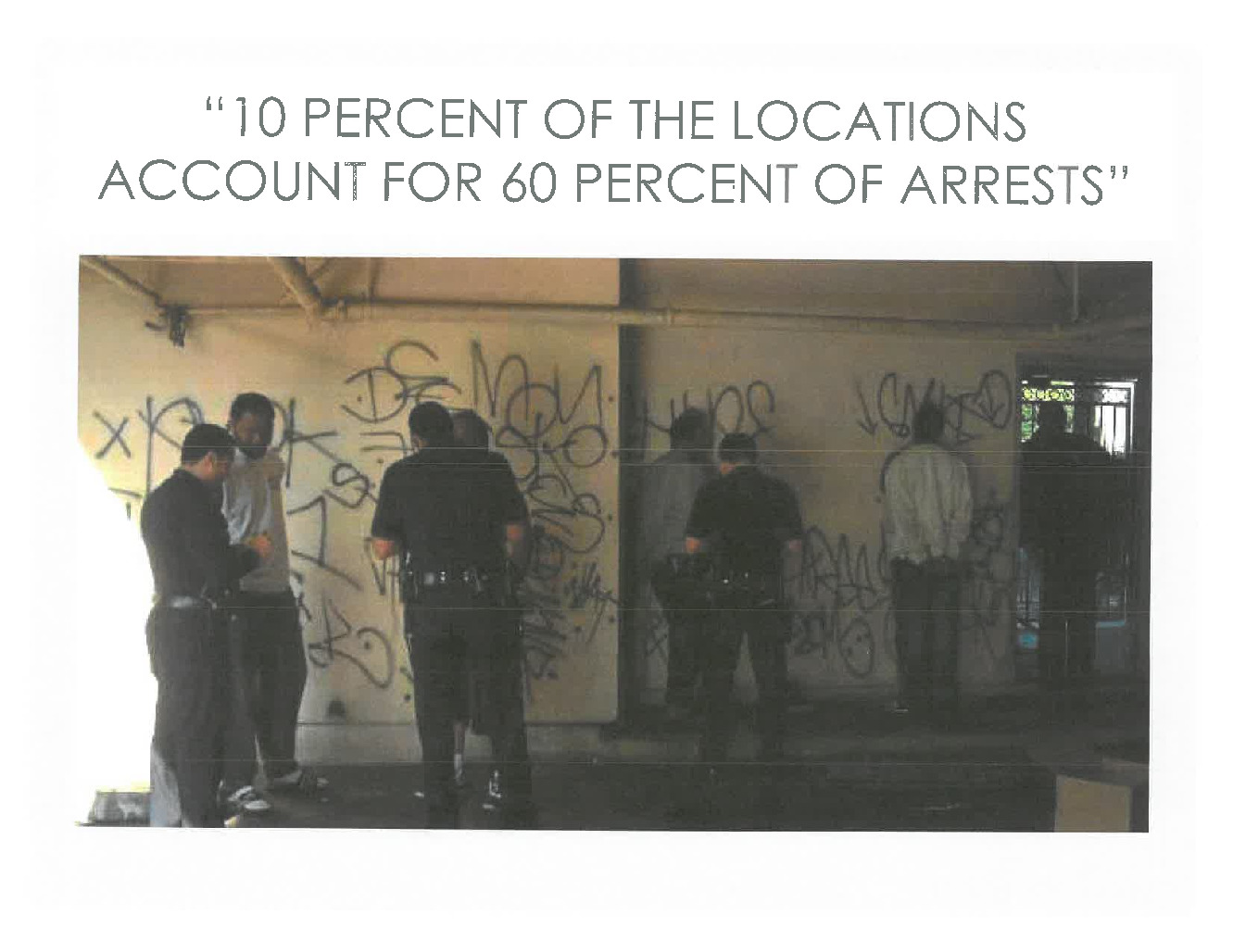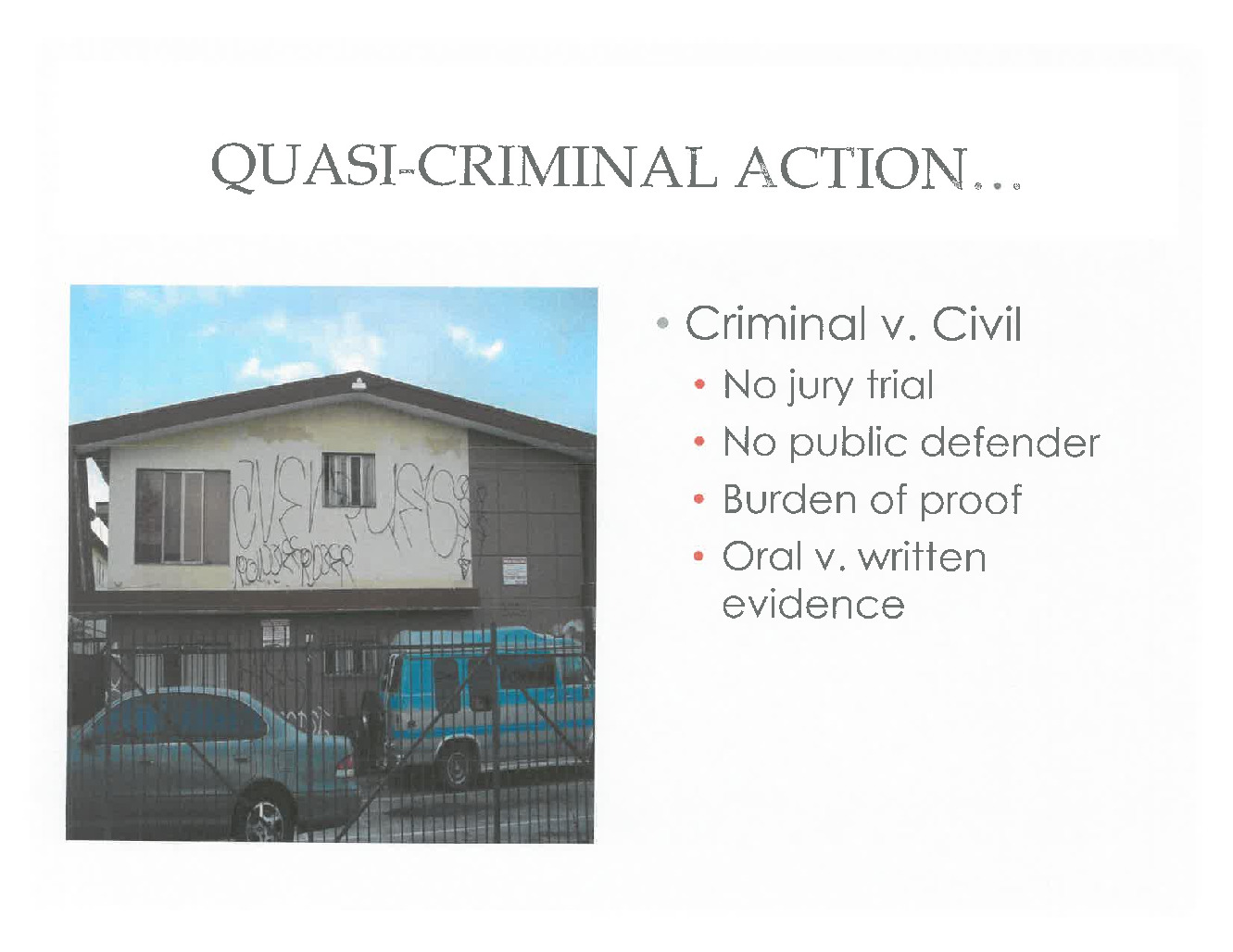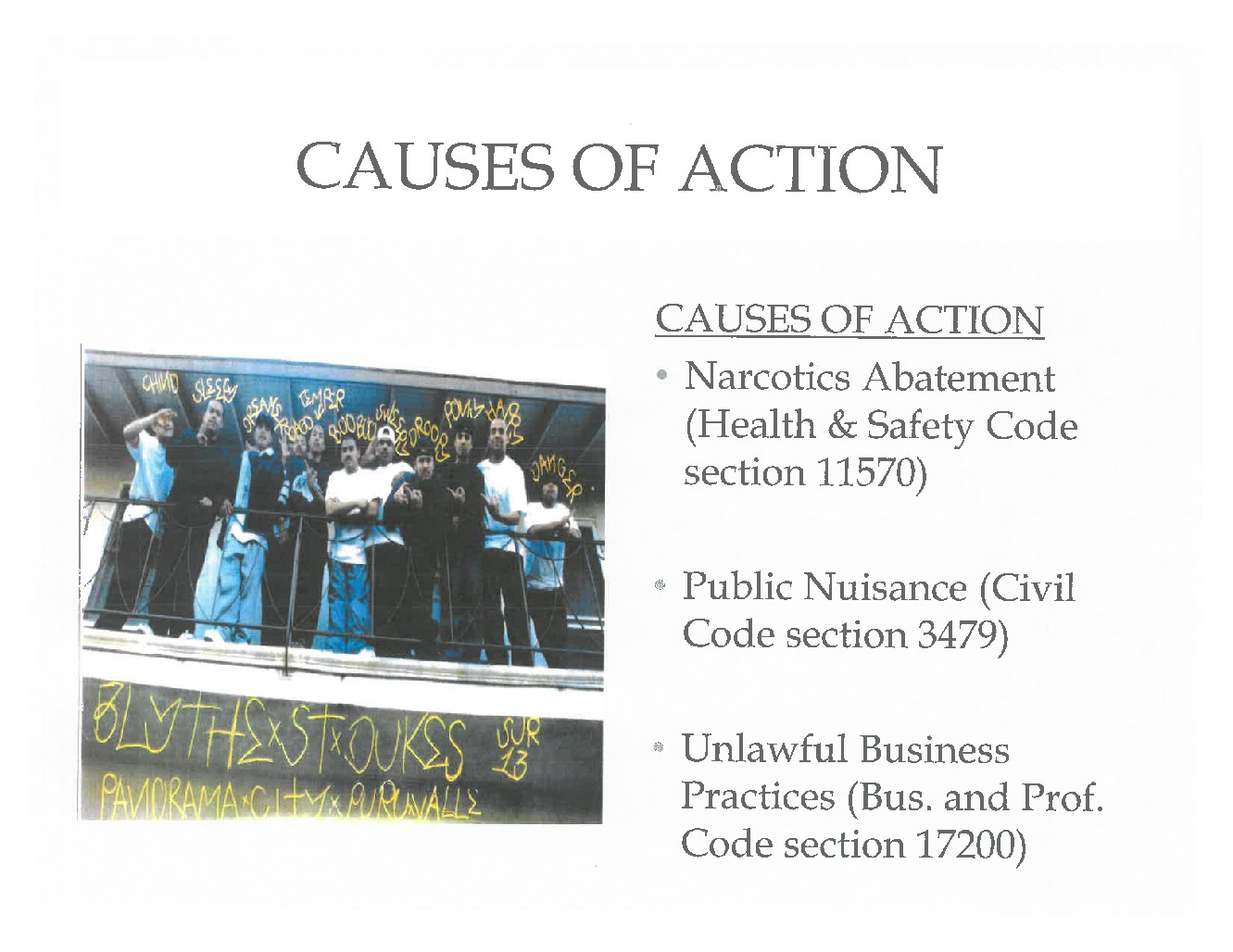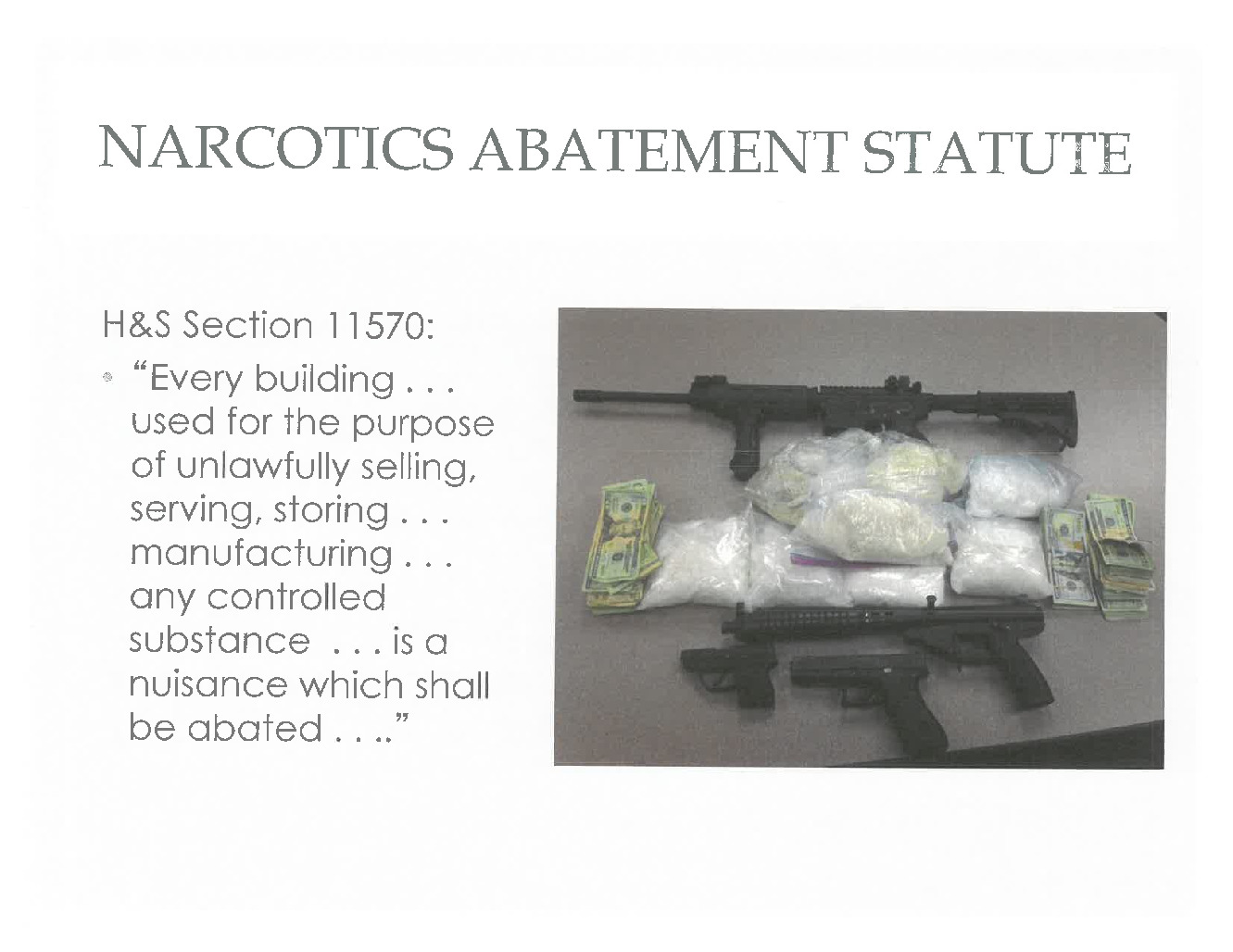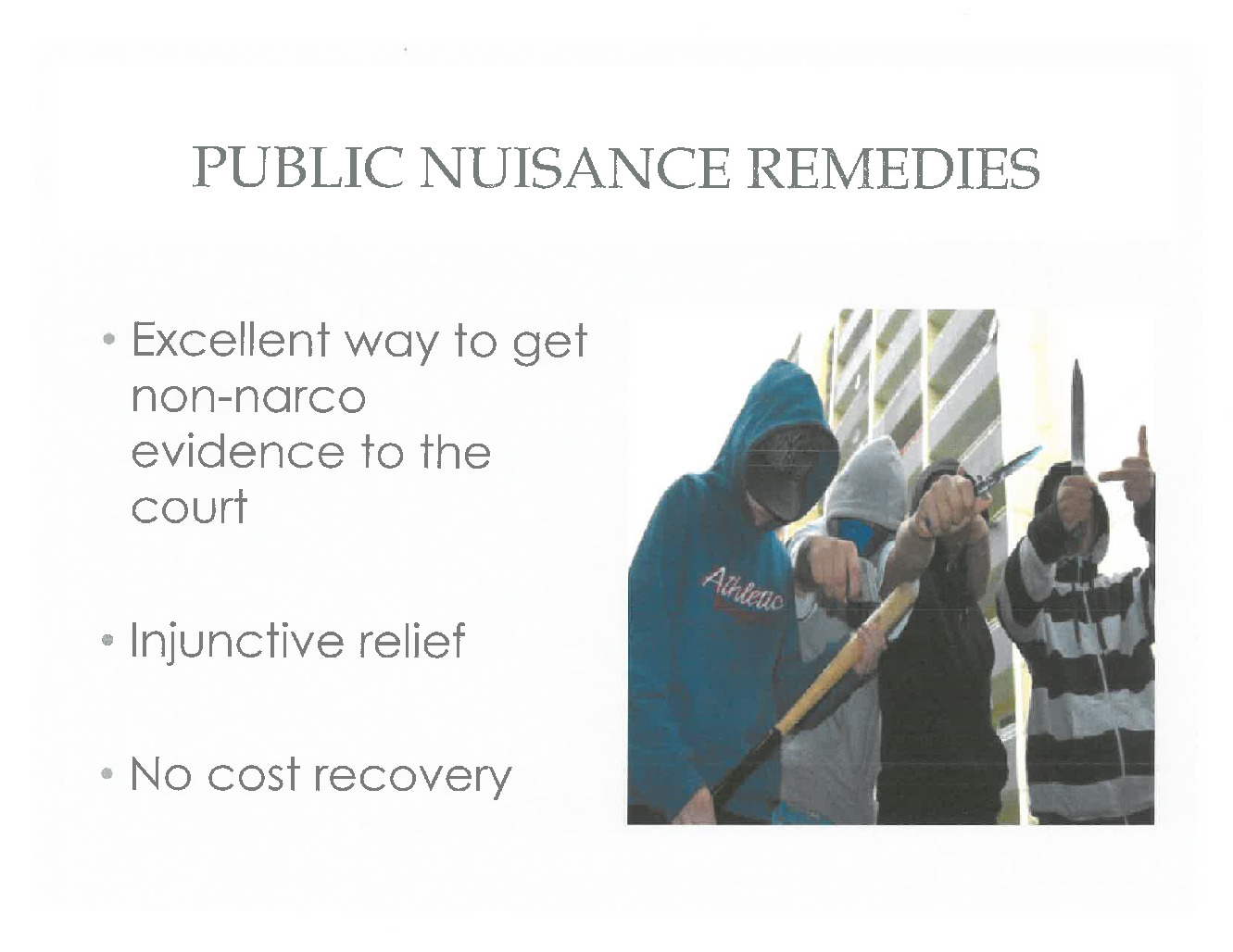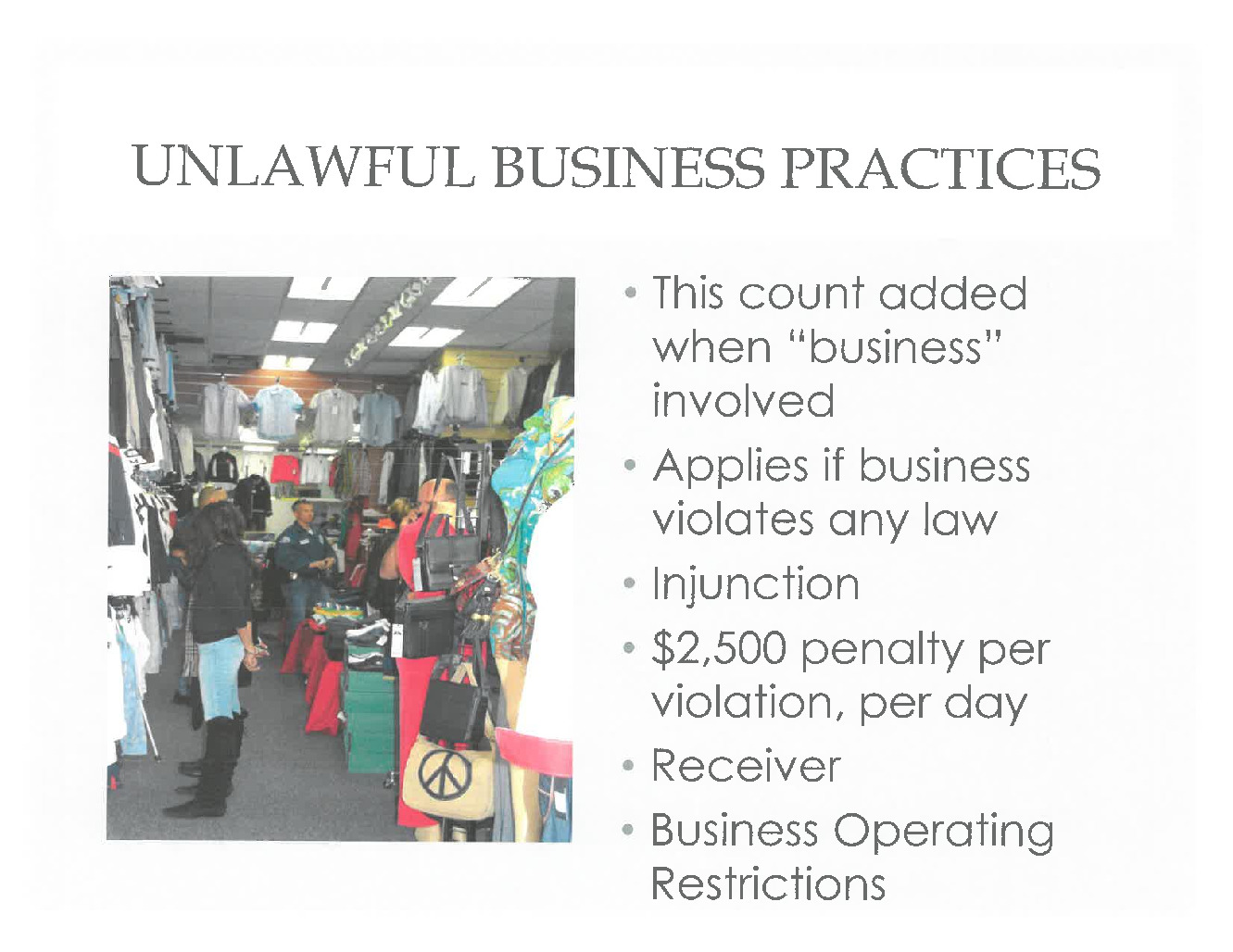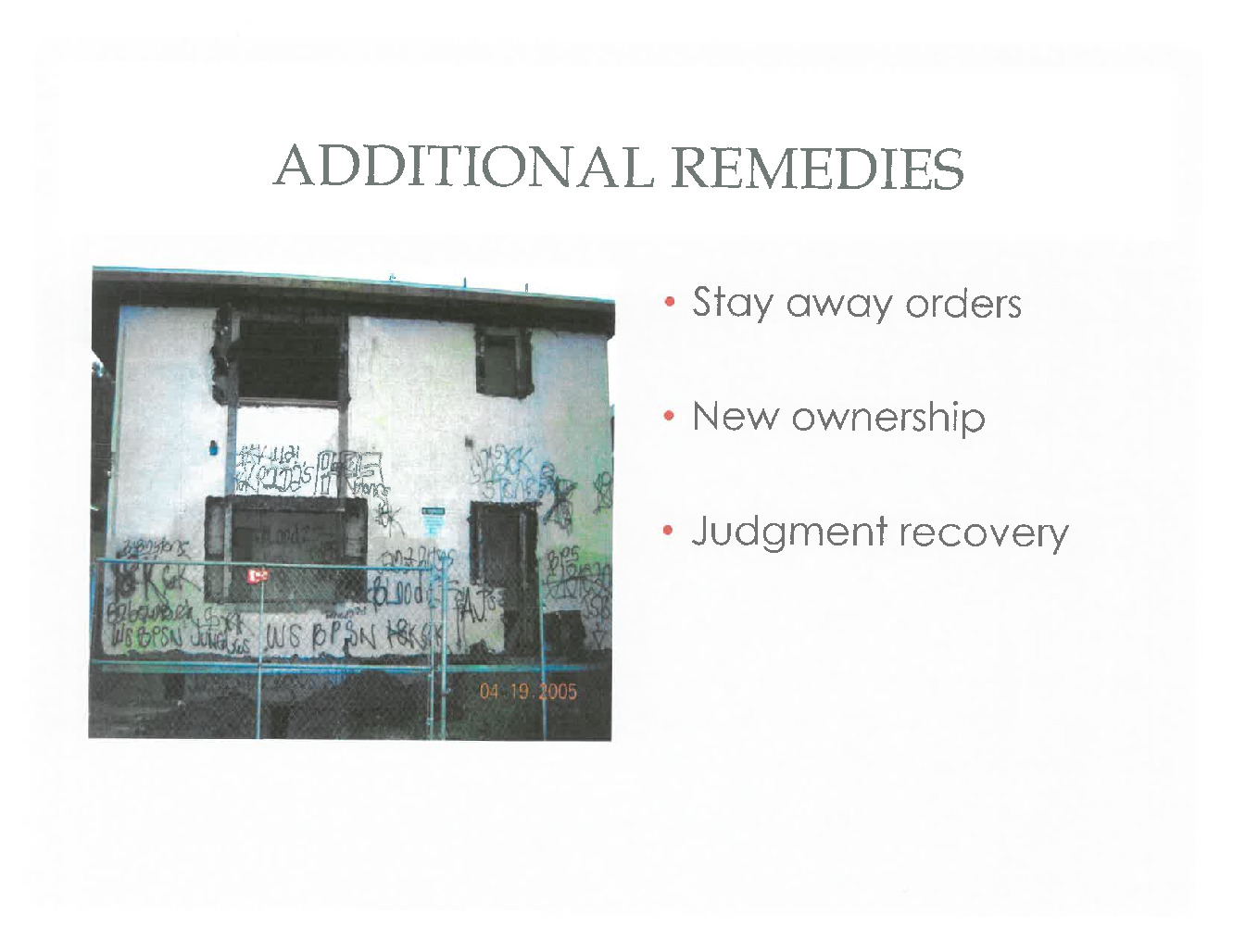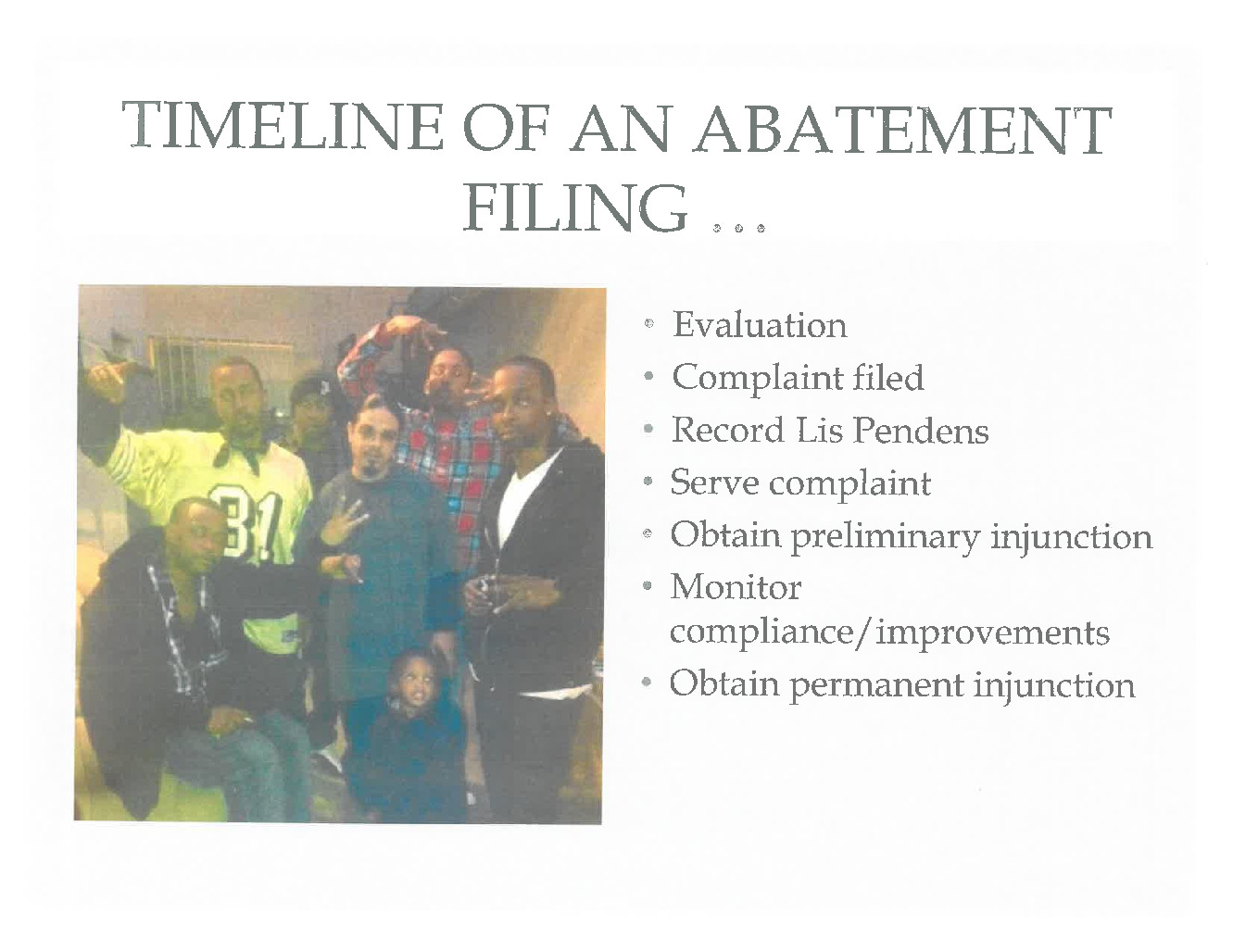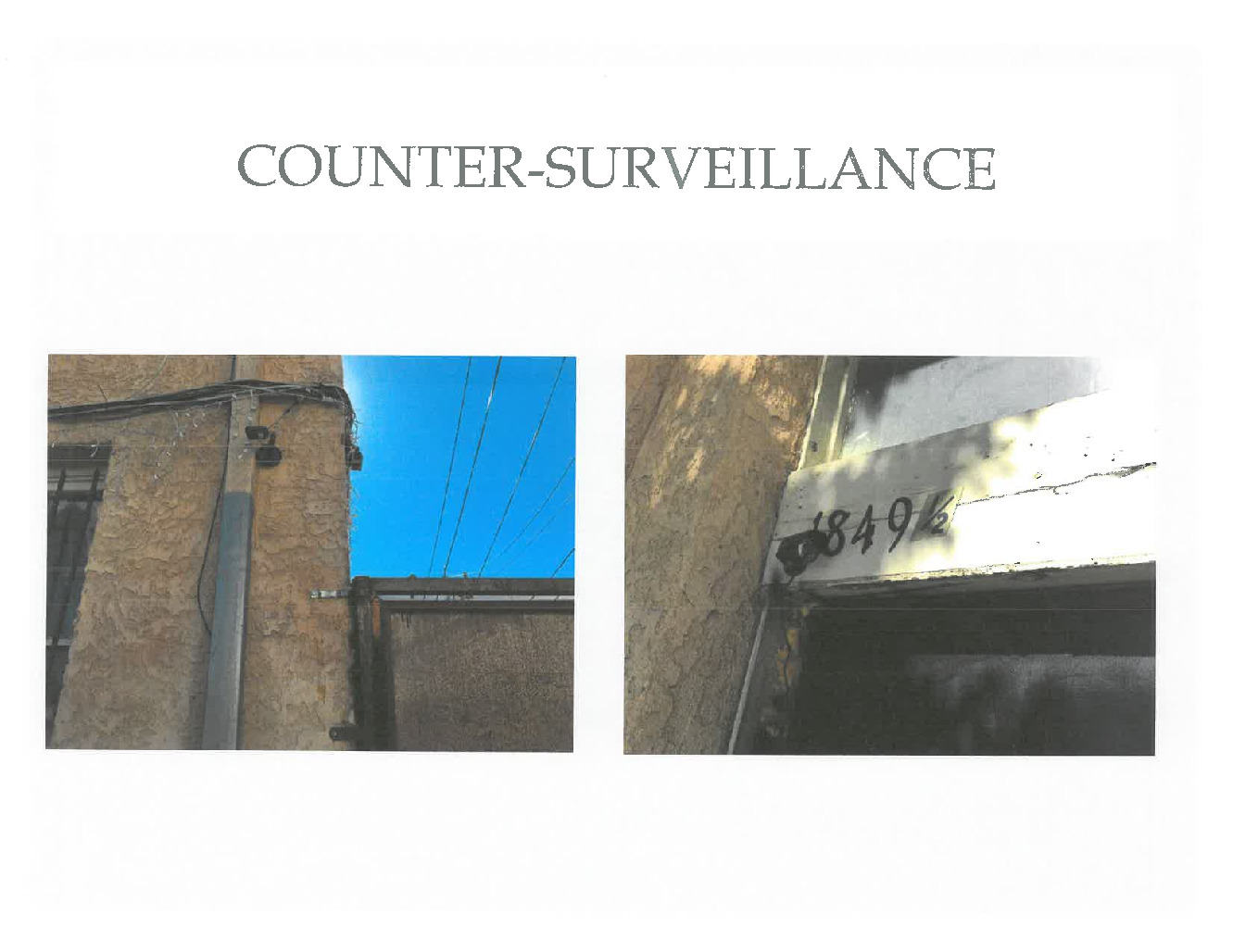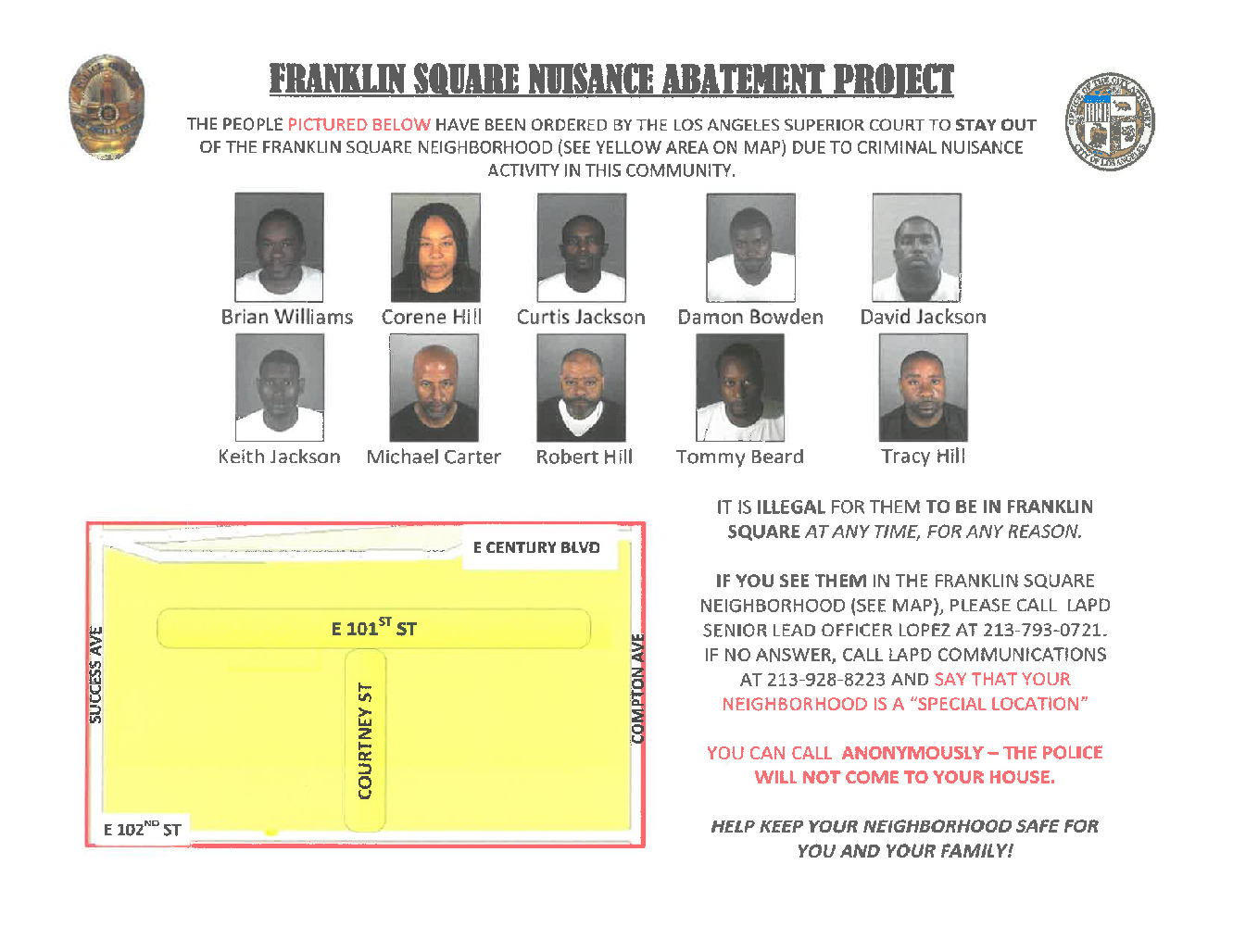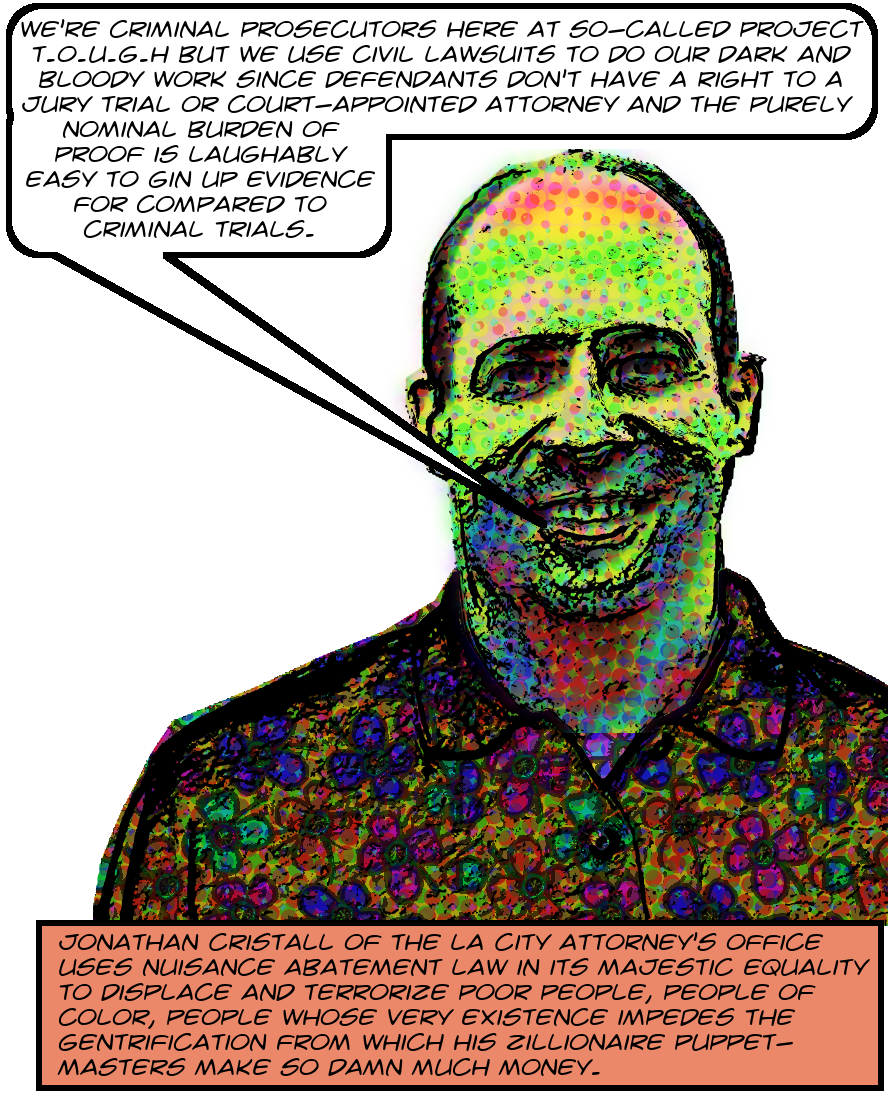 The City of Los Angeles famously uses civil nuisance abatement lawsuits against property owners and residents in areas of the City being prepped for gentrification. These suits are yet another of the million superficially more acceptable forms into which old-fashioned urban renewal was reincarnated after it became clear to the world that James Baldwin was spot-on in his characterization of it as Negro removal.
The City of Los Angeles famously uses civil nuisance abatement lawsuits against property owners and residents in areas of the City being prepped for gentrification. These suits are yet another of the million superficially more acceptable forms into which old-fashioned urban renewal was reincarnated after it became clear to the world that James Baldwin was spot-on in his characterization of it as Negro removal.
For the most part news coverage of the hundreds of such suits filed by Mike Feuer’s office when there’s coverage at all has been uncritically accepting of the City’s unsupported-by-evidence story that these actions fight crime and increase safety.1 But the revelation after the murder of Nipsey Hussle that the City Attorney had been working towards filing such an action against Hussle’s property at Crenshaw and Slauson seems to have opened the door for much more critical coverage.2
Complaints that actually get filed, it turns out, are just a small part of the nuisance abatement program. The City Attorney sends out hundreds of demand letters to targeted property owners, most of which lead to settlements, evictions, and other such results sought by the City without ever having to file anything in court. I’ve been investigating this process via the California Public Records Act. The City Attorney denied my request for copies of the demand letters3 but they are in the process of producing copies of all the actually filed complaints.4
And just recently they turned over a couple of other interesting items. The first is a 2009 how-to why-to article by Los Angeles nuisance abatement pioneers Jonathan Cristall5 and Liora Forman-Echols called Property Abatements — The Other Gang Injunction. The other is a PDF version of an undated PowerPoint presentation about the nuisance abatement program. the PowerPoint thing doesn’t have much intentional content6 but the endless parade of photographs put the barely tacit racism of the whole project on vivid pictorial display. Some choice slides appear at the end of this post.
The article, though, is essential reading. Not only does it lay out the City Attorney’s entire strategy for prepping and filing nuisance abatement cases, but it really highlights the racist, antisocial, essentially colonial underpinnings of the whole project, neatly coded into talk about reclaiming streets from gangs, gang control over neighborhoods, gangs as plagues, and so on.
And these two prosecutors are very open about the advantages inherent in the fact that nuisance abatement suits are civil rather than criminal: There are several benefits to this: (1) by going to civil court, injunctive relief abating the nuisance can be obtained—a highly effective way to deal with the problems; (2) the defendants do not have a right to a jury trial or a court-appointed attorney; and (3) the burden of proof in civil court is a preponderance of the evidence, rather than the heightened beyond-a-reasonable-doubt standard used in criminal proceedings.
In 2018 a federal court enjoined the City of LA from enforcing gang injunctions, but the constitutionality of these nuisance abatement actions filed against individual property owners and residents hasn’t been challenged,7 at least not in Los Angeles.8 And the City Attorney’s office explicitly frames them as similar to gang injunctions: “Both gang injunctions and gang property abatements are nuisance abatement actions. A gang injunction is a lawsuit against an entire gang. A gang property abatement focuses on a specific property and targets the property owners and specific gang members who are creating or allowing the nuisance there.”
The City of Los Angeles has famously also used gang injunctions to promote gentrification. They apply to pretty much any person who appears in California’s infamous CalGang Database purely by virtue of their being on that list. Property abatements on the other hand have to be against specific named people, but the classes of people that the article recommends filing against are broad enough that it’s easy enough to envision these actions replacing now-enjoined gang injunctions in the City’s pro-gentrification armory.
Just for instance it includes “Tenants who are not members of the gang, but who directly or indirectly assist gang members with their criminal activity, are commonly referred to as ‘friendlies’ and may be named as defendants, if their activity can be linked to the property.”9 Notice, by the way, the casual use of military terminology, “a friendly” being “A person or entity on the same side in a conflict.”
The focus on South Central Los Angeles in the article10 is key to understanding what this tool is being used to accomplish. Although state law declares that any property used for selling or even storing illegal drugs is a nuisance which should be abated,11 there’s no mention whatsoever here about using this law against the many, many, many middle class and rich drug users who, undoubtedly, use their houses or apartments for storing their drugs, nor the specialized ritzy dealers that serve this market.
The same goes for other activities identified here as contributing to a property’s status as a nuisance, e.g. “gambling, drinking in public, loud parties, and other well-established nuisance activities are typically found at these locations.” Of course rich drug users have big houses with plenty of private space. They can have loud parties where they and their drug friends and dealers can drink and gamble without having to sit outside in public view.
By the way, the inclusion of drinking in public on this list is especially telling. First of all it has only been illegal in Los Angeles since 1983, so it’s a little rich to describe it as a “well-established nuisance [activity]”. And the only thing that makes the activity illegal is the fact that it’s being done in public, which means that it’s designed specifically to be enforced against people who lack access to private space. BID security, for instance, uses this law ruthlessly against homeless people.
In some sense the fact that nuisance abatement suits target public activity might superficially explain the City’s focus on people of color in poor neighborhoods where private space is a luxury. But not really. To the extent that the laws were written to apply to activities in public they’re purposely written to only apply to poor people. To the extent that they allow private activity, such as indoor drug use, to count as a nuisance prosecutorial discretion keeps them pointed at the proper targets.
And not just any poor people are targets according to the article.12 It’s all about gangs, gangs, gangs, which in this context means black and Latino gangs conceptualized, although they don’t use the actual word, in accord with the ultraracist and thoroughly discredited superpredator theory. The conflation of drug dealing with gang activity along with the laser focus on South Central Los Angeles is yet another example of what historian Donna Murch describes in the context of the war on drugs as “[p]unitive campaigns against drugs and gangs in Los Angeles [which] rationalized a new martial infrastructure. The state applied militarization unequally by focusing on historic African American and Latino neighborhoods in the south central part of the city.”13
According to Murch, speaking about the 1980s and 1990s in Los Angeles, “the conflation of drug crimes with street gang membership created a comprehensive net for the criminalization of nonwhite youth. The lapd’s selective arrest and prosecution of youth of color meant that the category of ‘gang’ became inherently racialized.” And this article by these two prosecutors who pioneered the use of nuisance abatements in our City’s “inherently racialized” and ongoing war on poor people of color shows that although tactics shift the strategy remains the same.
Image of Jonathan Cristall is ©2020 MichaelKohlhaas.Org. And here’s the equivalent of a thousand words on that subject.
- See e.g. this idiotic article by NBC explaining that one of Feuer’s targets is extra bad because of its putative proximity, a thousand feet, to schools and parks. Facts like this are apparently one of the elements the City Attorney is required to establish in such cases as they’re included in all their complaints without ever establishing any kind of connection to the self-proclaimed goals of increasing safety. This kind of quotation-as-fact from court pleadings is one of the dispositive hallmarks of the kind of bootlicker journalism that’s typical with respect to nuisance abatement.
- See for instance this thoughtful and important piece by Sahra Suleiman in Streetsblog LA.
- Forcing me to file a lawsuit against them, which is still pending.
- These are all available on Archive.Org. At the time I’m writing this they’ve produced material from the following years: 2015 • 2016 • 2017-2019.
- Cristall is recently reinventing himself as a tough-love flavored teen advice maven. I am not making this up.
- By which I mean to say that it has plenty of content, it’s full to the damn brim with meaning, none of which was intentionally included by the authors, and none of which is stated explicitly. It’s not far from the surface, though, easy enough to spot. As a wise man once said: got eyes, take a damn look!
- Yet!
- At least not as far as I know.
- Here’s the whole list:
• Property owners: Any and all individuals or entities who currently have an ownership interest in the property are always named as defendants in the lawsuit. The law holds the property owner responsible for the activity on the property; therefore, the owner is a necessary party to the lawsuit. It may also be appropriate to name prior owners, if the change in ownership was recent and the nuisance occurred under their ownership.• Gang members: Gang members using the property to facilitate their criminal activity, whether or not they are tenants, are named as defendants. In some instances, in which numerous gang members are using the property for criminal activity, it may not be expedient to name all of them as defendants.* In those situations, those who live at the property and those committing the worst offenses at the property are named as defendants.
• Gang member associates: Tenants who are not members of the gang, but who directly or indirectly assist gang members with their criminal activity, are commonly referred to as “friendlies” and may be named as defendants, if their activity can be linked to the property.
• Property managers: Property managers who are negligent in their duties may be named as defendants.
* The footnote explaining what’s meant by “expedient” here is worth reading: “Evaluate service of process issues thoroughly and well before filing. Consider the difficulty of serving the legal paperwork on multiple gang member defendants, some of whom may be in custody, others who may be out, and still others who are on the run and difficult to track down.” - And not just in the article, but as actually reflected in the choice of targets.
- This is in the California Health and Safety Code at §11570, which states: Every building or place used for the purpose of unlawfully selling, serving, storing, keeping, manufacturing, or giving away any controlled substance, precursor, or analog specified in this division, and every building or place wherein or upon which those acts take place, is a nuisance which shall be enjoined, abated, and prevented, and for which damages may be recovered, whether it is a public or private nuisance.
- In practice, at least in recent years, it may well be just any poor people that are targets. It’s my impression from my admittedly not-yet-complete analysis of the complaints that the focus on gangs has become more pretextual since gang injunctions were declared unconstitutional.
- Crack in Los Angeles: Crisis, Militarization and the Black Response to the Late Twentieth Century War on Drugs by Donna Murch. J. Am. Hist. June 2015. doi: 10.1093/jahist/jav260.

